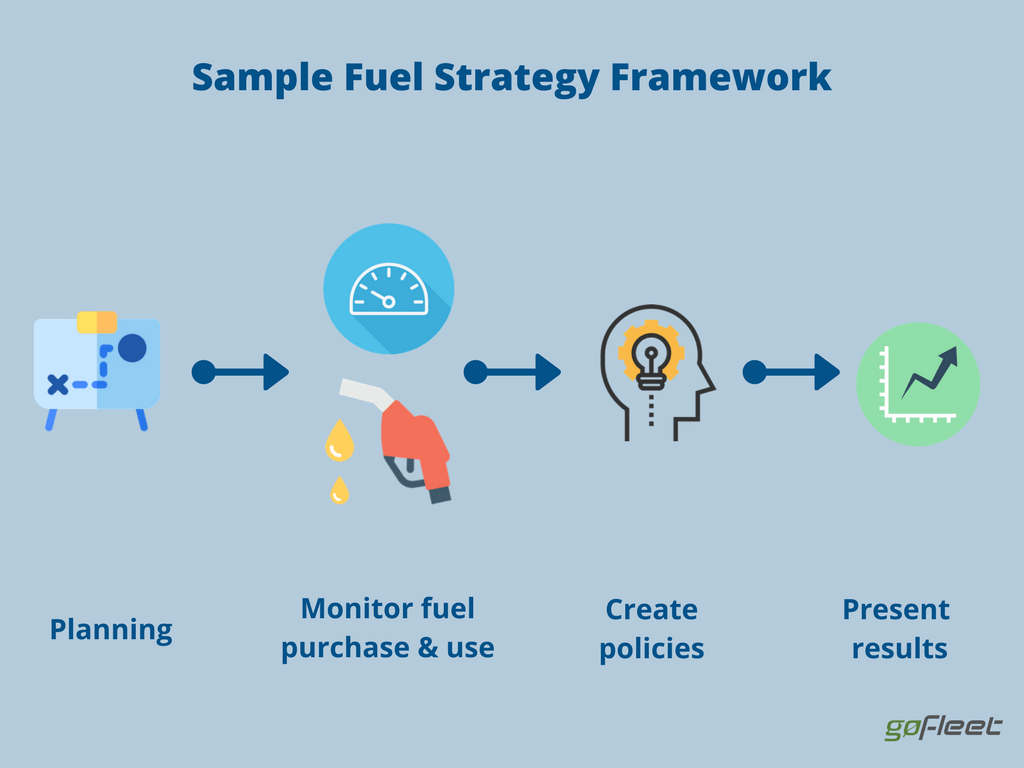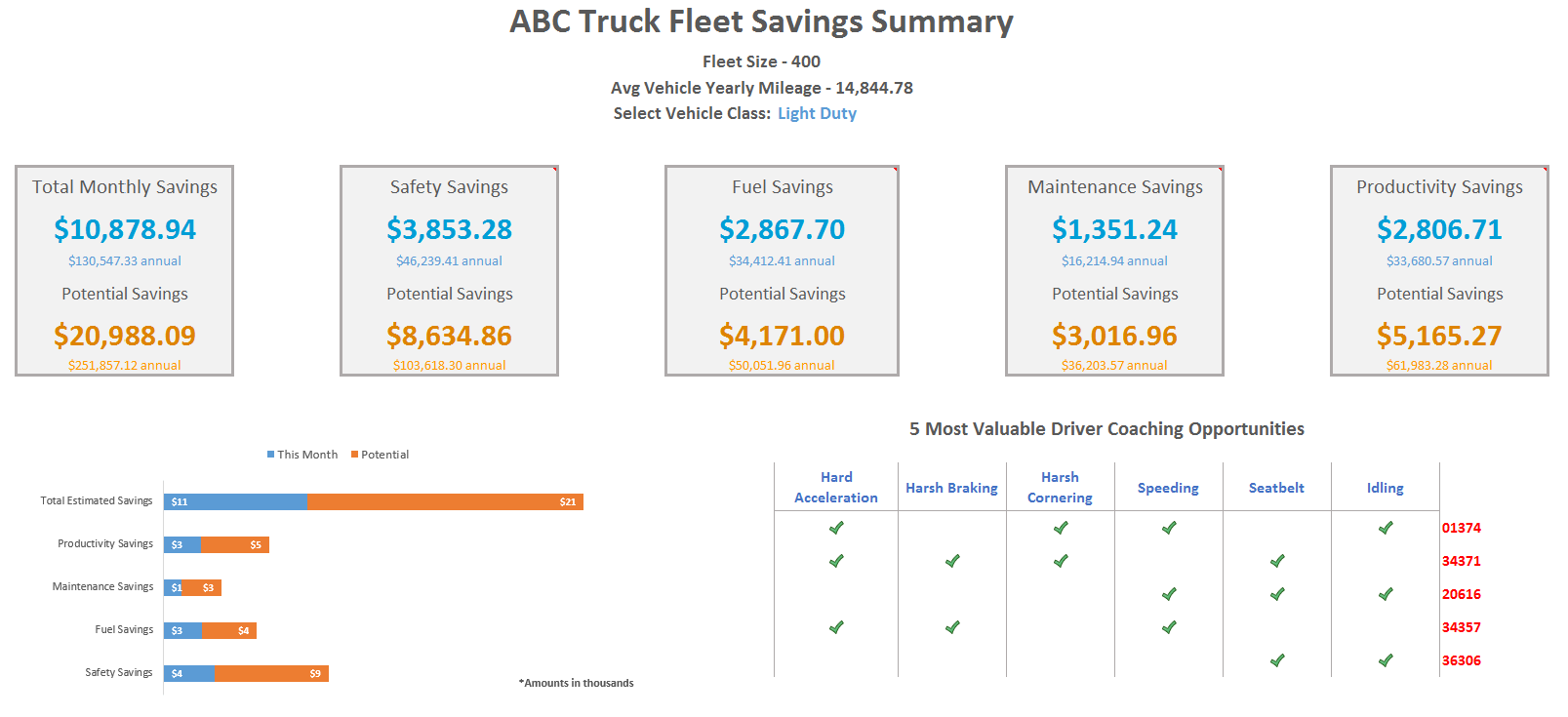Fuel Strategy Framework | Fuel Monitoring Systems for Trucks
The new year is always a good time for businesses to review their strategies! For fleets, one of these strategies might be the fuel strategy. Even in a new year, fleet managers are challenged to get more bang for fuel bucks. Here is a sample fuel strategy framework that is powered by data from fuel monitoring systems for trucks.
ABC Company’s Fuel Strategy Framework
ABC Company is a trucking company. It’s no surprise that fuel is one of their biggest costs. For that reason, ABC’s fleet manager uses fuel monitoring systems for trucks to guide their fuel strategy.
ABC’s fuel strategy is organized into a step by step process. In this process, the fleet manager plans fuel savings, monitors fuel data, creates policies, and reports results.
Let’s closely examine each step.
Step 1: Planning savings with Fleet Savings Summary
As with any good strategy, the first step is to set goals. This is no different for ABC’s fuel strategy. At the beginning of each year, the fleet manager sets fuel savings targets with a Fleet Savings Summary report.
The Fleet Savings Summary creates a dashboard of potential savings from using fuel monitoring systems for trucks. Throughout the year, the fleet manager uses the savings dashboard to compare results against targets.
Step 2: Monitoring fuel purchase with Fuel Tracker
In the second step, ABC’s fleet manager collects fuel purchase data. Vital data is collected and reported on the Fuel Tracker Report.
For instance, the fleet manager can see where fuel was purchased, how much fuel costed, and what was the fuel economy. Afterwards, the fleet manager creates effective purchase policies by analyzing fuel purchase reports.
Step 3: Monitoring fuel usage with Fuel Consumption Analysis
The third step is to monitor trucks as they go on the road. Here, the fleet manager’s biggest challenge is to make sense of all of the data.
Since fuel use depends on different factors, the fleet manager relies on Fuel Consumption Analysis to narrow down what’s driving fuel cost and how to meet savings targets.
For instance, fuel variation reports shows how much fuel was consumed each day. From these reports, ABC can filter out days that had dips in fuel efficiency.
From here, the fleet manager looks at each dips and makes sense of it. Was it caused by poor driving? Long routes? Faulty vehicles? By going through the checklist, the fleet manager can then make an informed decision on how to meet savings targets.
Step 4: Creating policies
The fourth step is where fleet managers earn their living. In order to reach the year’s savings targets, ABC’s fleet manager creates policies from data collected in the last 2 steps.
After reviewing data, ABC created the following policies:
- Fuel purchases. The fleet manager published a list of preferred fuelling stations. By using fuel purchase data, the fleet manager identified the highest value fuelling stations.
- Driver training. The fleet manager sent several drivers to a training center. After analysing variation reports, the fleet manager noticed that the same drivers struggled with certain driving habits. Then, by re-training the drivers, fuel savings increased.
- Truck order. The fleet manager ordered a new truck. The fleet manager noticed that a particular truck struggled with fuel savings. After crossing off all other factors, the fleet manager was finally able to prove that it was time to replace the aging truck.
Step 5: Reporting results with Quarterly Fuel Trends
The final step is to report fuel results. In order to report results, the fleet manager used a tool called Quarterly Fuel Trends.
Quarterly Fuel Trends summarizes fuel changes in each quarter. With this report, ABC’s fleet manager was able to prove that the fleet reduced fuel costs each quarter. Here comes the bonus cheques!



